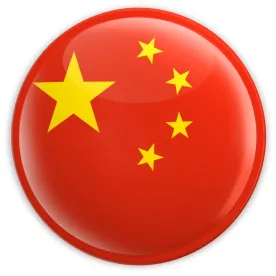On October 15, 2020, China's National Health Commission (NHC) published on its website five draft National Food Safety Standards (GB standards) in relation to food-contact materials and articles for public comment.[1] We have provided an overview to each of these draft GB standards in turn below.
Food-Contact Use Composite Materials and Articles
This is the second draft GB standard on food-contact use composite materials and articles that NHC has published. It applies to "food-contact materials and articles of two or more layers made from different or same materials by adhesion, hot melting or other ways." The food-contact substances used in each layer must comply with the corresponding GB standard, e.g., the paper layer must comply with China's Paper Standard (GB 4806.8). As for the physicochemical specifications, the draft standard also requires that each layer of a composite material or article must comply with the corresponding GB standard, and the specifications for overall migration, potassium permanganate consumption, heavy metals (as Pb), and de-coloration tests must follow the GB standard for the direct food-contact layer. In addition, composite materials and articles also must comply with the general physicochemical specifications on the migration level of primary aromatic amine and total residual level of solvents specified in the draft standard. Notably, the draft standard requires that the label of composite materials and articles must identify the type of material used in each layer.
Food-Contact Use Printing Inks
The draft standard on printing inks applies to the printing inks in direct contact with food, or those in indirect contact with food if the components may transfer to food. It also captures the varnish used together with the inks. The draft standard does not contain a positive list of substances permitted for use in printing inks, but sets out different requirements for the raw materials (base materials and additives) based on whether the printing ink is in direct or indirect contact with food.
![]() For example, additives used in printing inks in direct contact with food must be food additives permitted in China under GB 2760 on the use of food additives, whereas for indirect contact with food, the additives in printing inks must be food-contact additives cleared in GB 9685 on the use of food-contact additives or relevant government approvals. The draft standard establishes residual limits on heavy metals (lead, mercury, cadmium, chromium, and arsenic) in printing inks; it also sets out specifications on overall migration, potassium permanganate consumption, heavy metals (as Pb), and the migration level of primary aromatic amine for printing ink layers.
For example, additives used in printing inks in direct contact with food must be food additives permitted in China under GB 2760 on the use of food additives, whereas for indirect contact with food, the additives in printing inks must be food-contact additives cleared in GB 9685 on the use of food-contact additives or relevant government approvals. The draft standard establishes residual limits on heavy metals (lead, mercury, cadmium, chromium, and arsenic) in printing inks; it also sets out specifications on overall migration, potassium permanganate consumption, heavy metals (as Pb), and the migration level of primary aromatic amine for printing ink layers.
Food-Contact Use Paper and Paperboard
This draft paper standard will revise and replace the current GB standard on paper and paperboard (GB 4806.8-2016). Compared with the current version, it removes from the physicochemical specifications potassium permanganate consumption and heavy metal limits but adds residual limits on 1,3-dichloro-2-propanol and 3-chloro-1,2-propanediol. Other specifications on lead, arsenic, fluorescent substances, and formaldehyde remain unchanged and apply to paper and paperboard except those in contact with food that should be peeled, shelled, or washed before eating, cooking, or processing.
Food-Contact Use Bamboo and Wood Materials and Articles
This draft standard defines bamboo and wood materials and articles as those using bamboo, wood, or cork as raw materials, including cork stoppers, plant fiberboard containers, etc. Compared with the previous draft standard on "bamboo, wood, and cork materials and articles" published in 2016, the new draft standard makes revisions on various physicochemical specifications. For example, substances subject to residual limitations are reduced from six to four, but all with lower limitations than the previous draft. On the other hand, although the draft standard retains microorganism limitations, it makes it clearer that these limitations are applicable only to microorganisms in bamboo and wood materials and articles that are expected to come into direct contact with food and that can be directly used without disinfection or washing, except those in contact with food that should be peeled, shelled or washed before eating, cooking, or processing.
Detergents
This draft standard will revise and replace the existing GB standard on detergents (GB 14930.1-2015). As in the current version, the draft standard categorizes detergents into two classes: Class A detergents are those used directly for washing food, whereas Class B are those used to wash food-contact utensils, tools, equipment, food packaging materials, and containers, etc. The major changes include a new positive list of raw materials permitted for use in Class A detergents (Appendix A) and the addition of limitations on 1,4-dioxane. Particularly, the Appendix A positive list of raw materials for Class A detergents explicitly lists 115 substances; various salts as well as acids of certain listed substances, substances listed on China's food additive standard (GB 2760), conventional food ingredients, etc., also are permitted. When Class B detergents use raw materials not in Appendix A, the manufacturer must conduct a safety assessment to make sure the residual or migration level of these substances may not endanger human health; however, preservatives and colorants used in Class B detergents must be permitted in Appendix A.
Xusheng Zhang contributed to this article.








 />i
/>i
